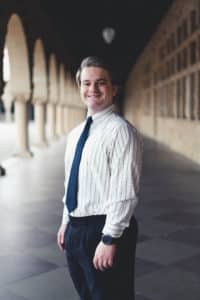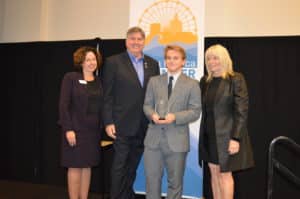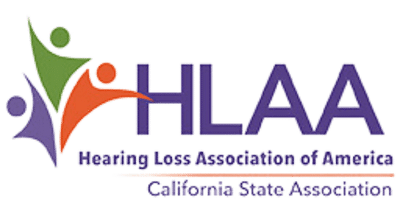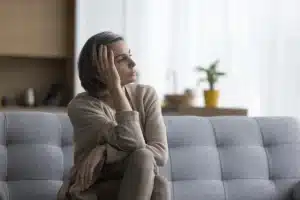
When John Butchko was an eighth grader in Santa Monica, he needed a community service project for school. A chance meeting with Nanci Linke-Ellis, former HLAA-CA SoCal Chapter Coordinator, gave him the inspiration to advocate for movie captioning in local theaters. As a typical teenager, John wanted to go to movies with his friends, but his hearing loss meant missing most of the dialog. With Nanci’s guidance and support, John approached a family friend who was also a city councilman and explained the situation. He asked the school PTA for support. He spoke to other city officials and learned what they needed to know in order to get behind his idea. Then he prepared a formal proposal and presented it to the full Santa Monica City Council. It was the right idea at the right time; within two months from the start of John’s campaign, the city council agreed to require movie theaters in their city to offer captioning in all locations so that John and other patrons with hearing loss could enjoy films like everyone else.

In tenth grade, John needed another community service project, this time for his English class. Many students chose to volunteer at existing programs, but John enlisted two of his friends, Isaac Horwitz-Hirsch and Xander Lee, and asked the teacher to approve an advocacy effort to gain additional access for community members with hearing loss in their city. This time the focus was changing local laws to require induction hearing loops in new building projects. The three students met with Thomas Kaufmann, president of Otojoy—a company offering high-quality assistive listening services—to educate themselves about loops. They made public comments in front of the Santa Monica Disabilities Commission, the Planning Commission and the City Council. As a result of their efforts, the City Council installed a hearing loop system in its chambers; the project was completed in July, 2015. Later that year, John was recognized by the Santa Monica Chamber of Commerce as its 2015 Young Inspirational Hero.
Later in high school, John advocated before the California Department of Education (DOE) Committee of Instructional Quality that the Education Code should protect deaf and hard of hearing children who speak as well as those who sign. The Committee agreed and changed the Education Code to be more inclusive. In recognition of his advocacy, he was given the John Tracy Clinic 2017 Spirit Award.
Because he is still committed to looping in California, John’s current focus is getting loops written into the State Building Code. Last November, he submitted a petition to the California Building Standards Commission proposing the amendment of Title 24 to include hearing loops in all new construction and substantial building renovations where assistive listening systems are currently required by law. John expects this process to be long and hopes to enlist the support of the hearing loss community as well as that of the general public when he is eventually able to get his petition up for consideration.

John feels that all of his advocacy has arisen from specific challenges that he has faced. He is often asked what he has learned from his efforts. He responds, “Two things have stood out to me. First, it is much more effective to talk with someone in person, to be a real live human being with a concern. If you stand in front of someone and make your point in an informed and respectful manner, they have to respond the same way. The second thing that has made an impression on me is that good things don’t just happen, someone has to cause them. And that is most likely when relationships are forged ‘behind the scenes.’”
John is completing his sophomore year at Stanford. He finds it easy to volunteer in the local community—everything from advocating for campus accessibility and disability awareness to tutoring underprivileged students to participating in a university initiative that brings kids in the area for a weekend to learn from Stanford students who design and teach the classes. He has been awarded an AG Bell STEMM-HEAR stipend to do auditory research as an intern in the Heller Lab this summer, working on the Stanford Initiative to Cure Hearing Loss.
This article was originally published in The Hearing Loss Californian Summer 2019.



